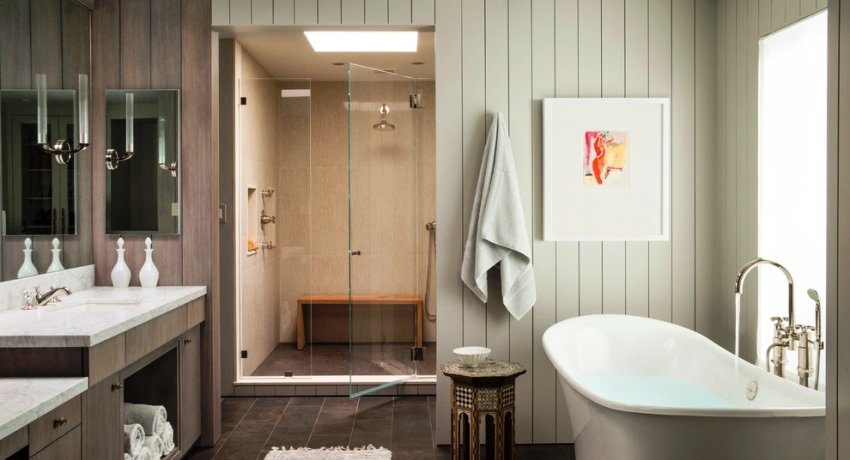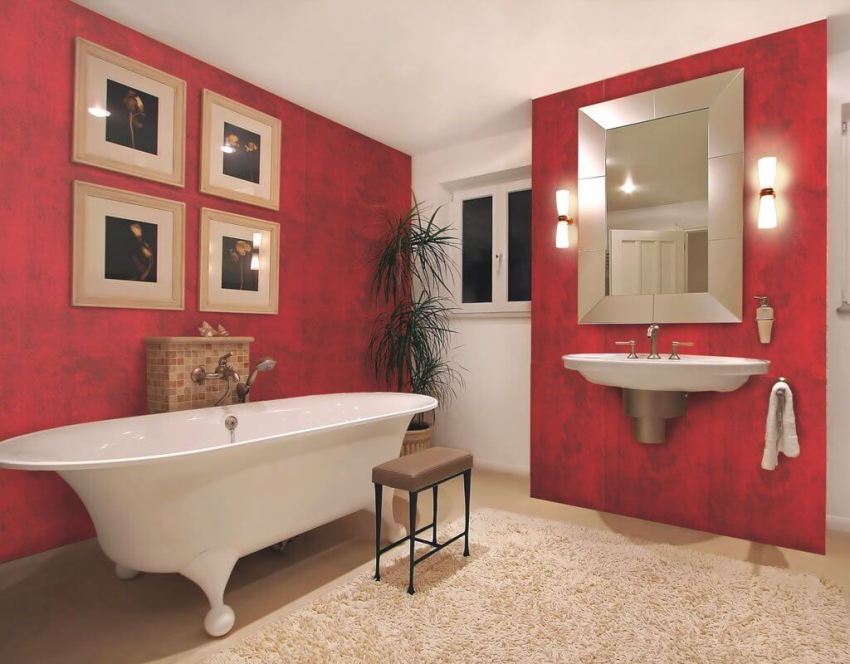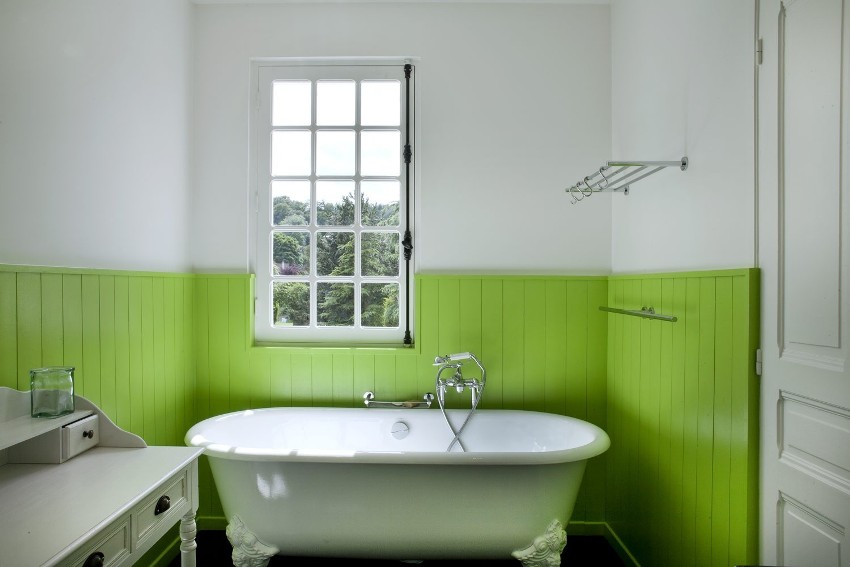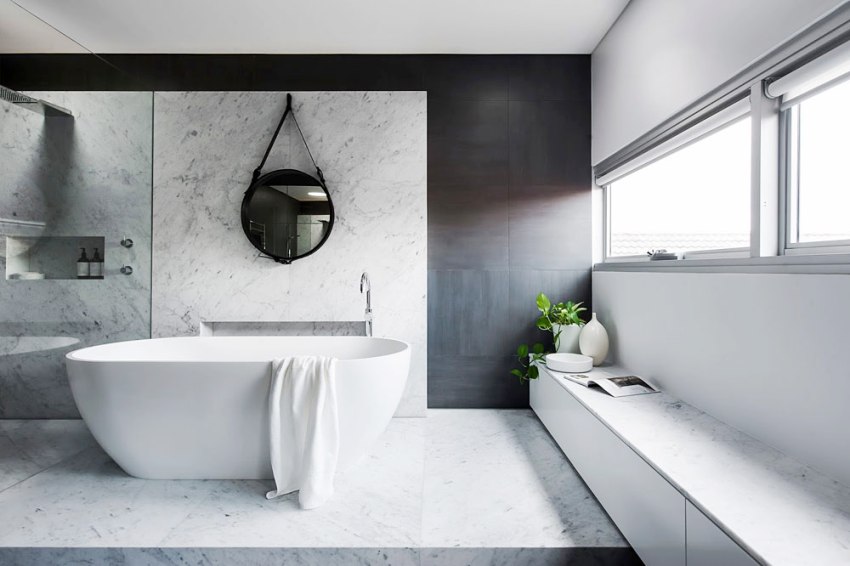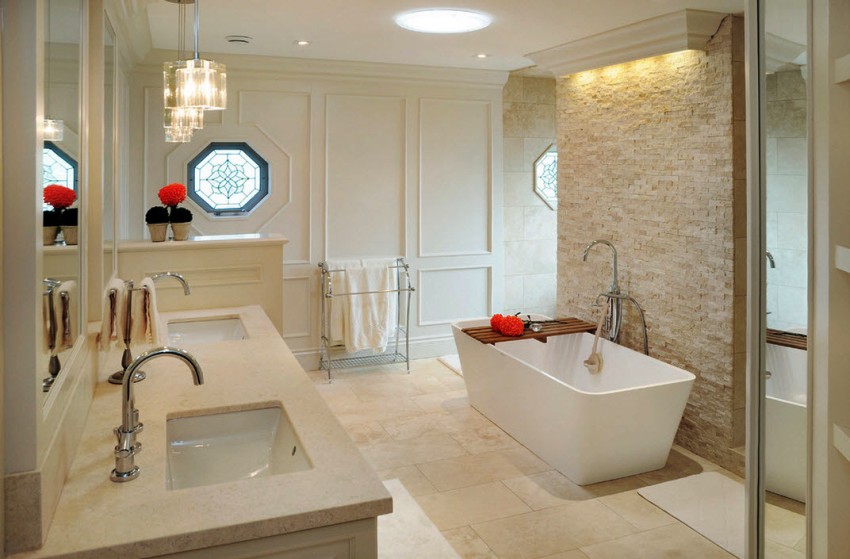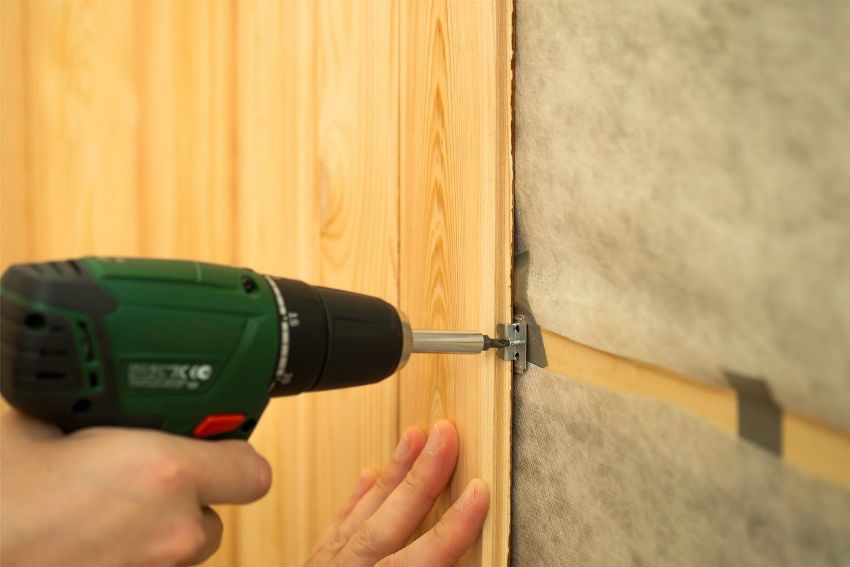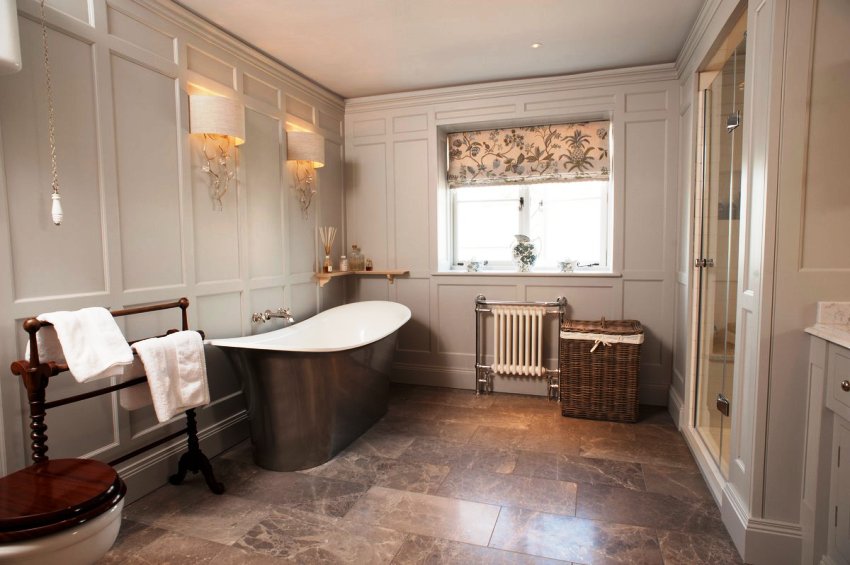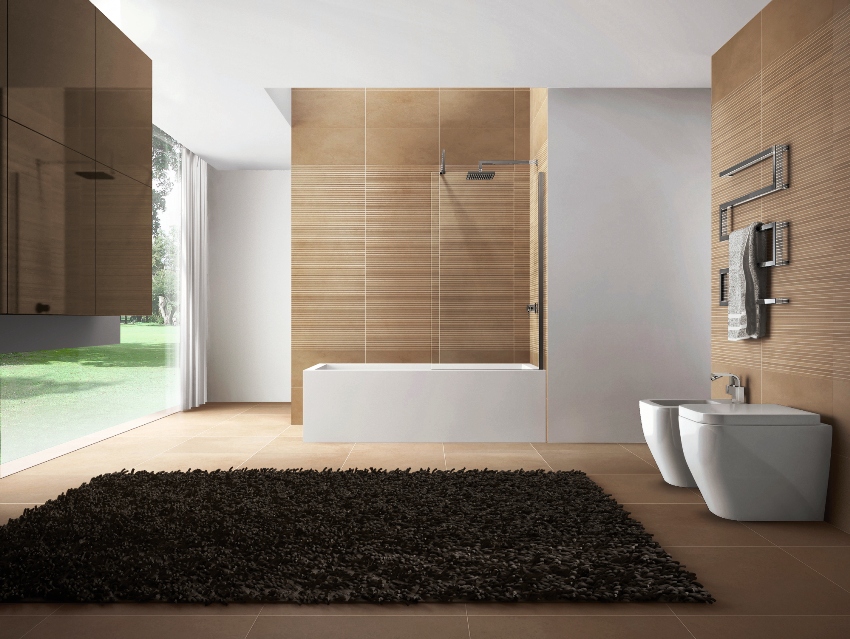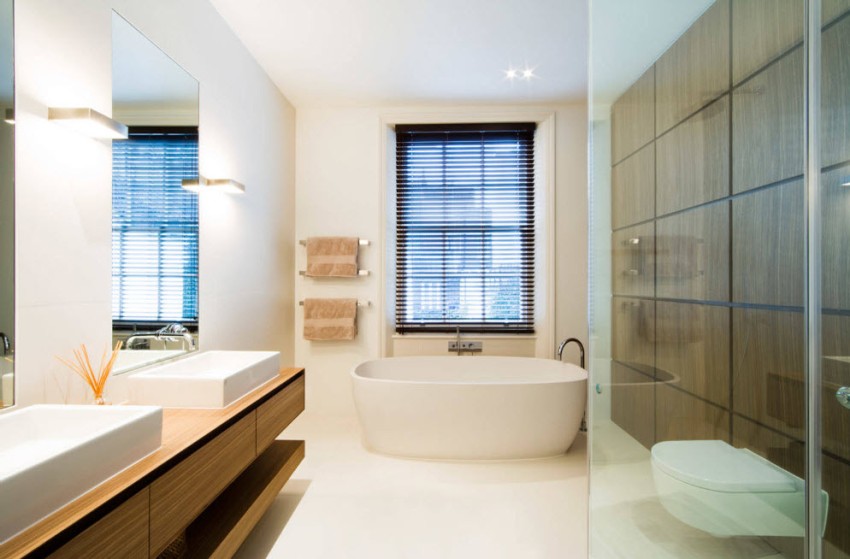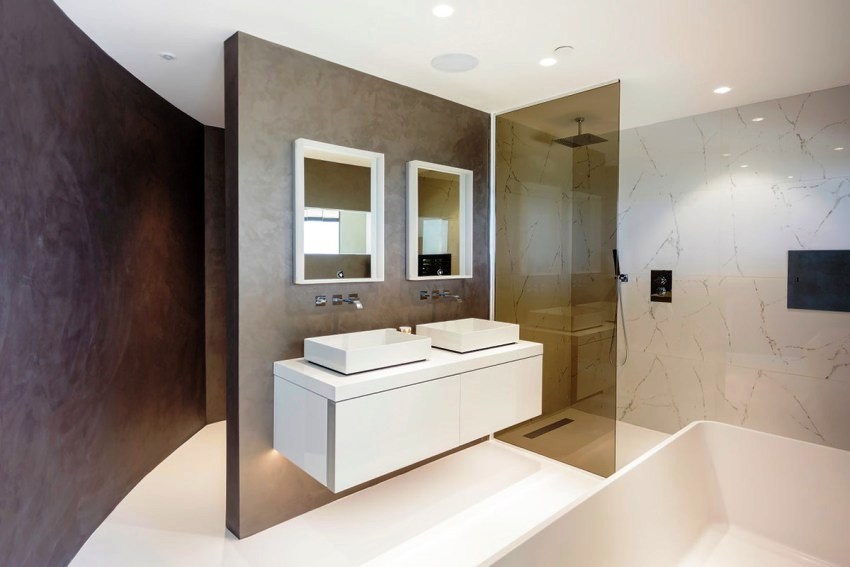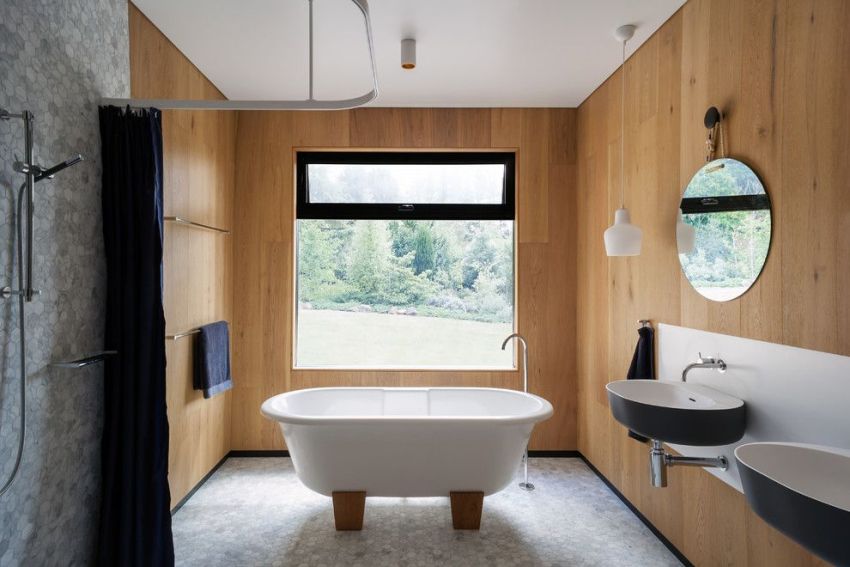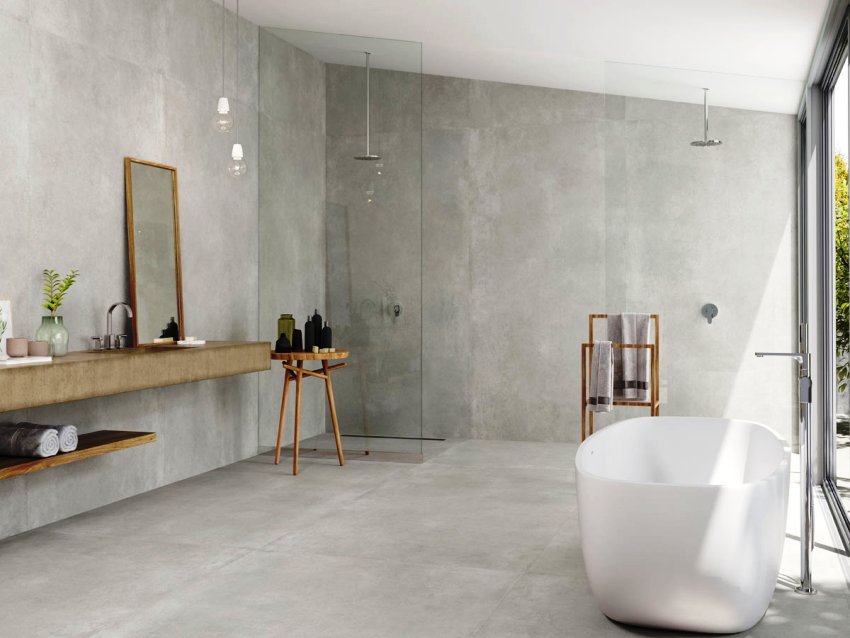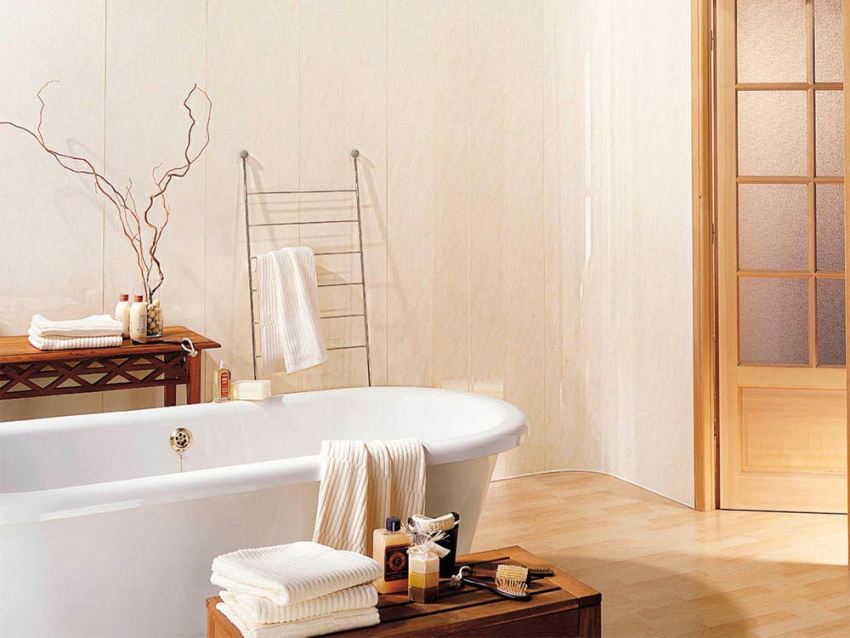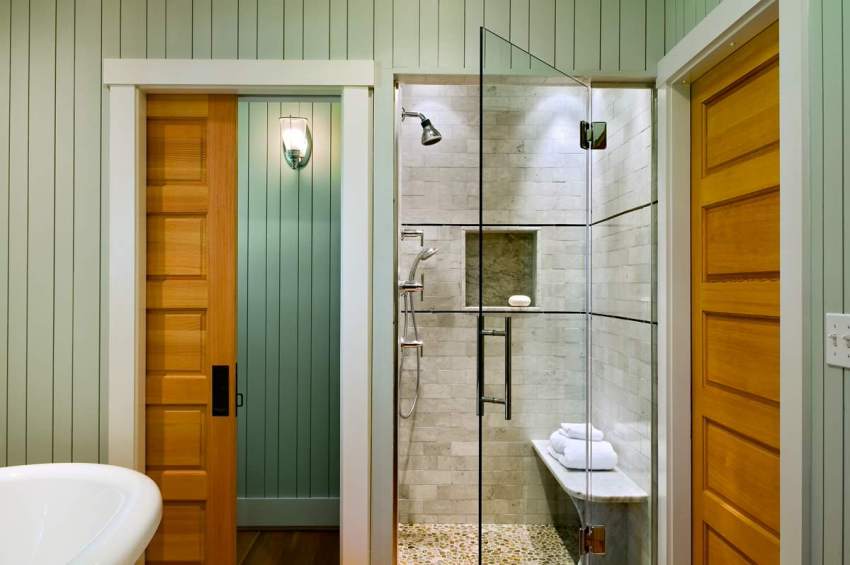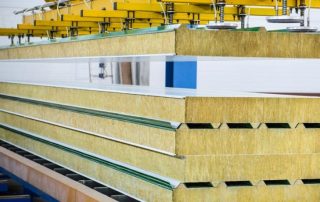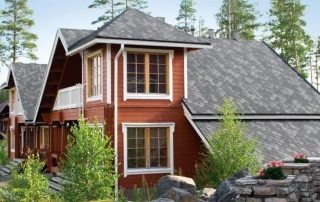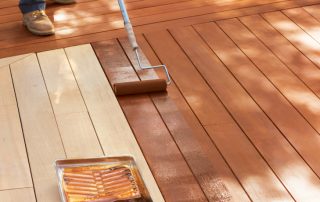Renovation in the bathroom has two goals: to make the room pleasant, aesthetic and to decorate it with materials suitable for use in high humidity conditions. Without the implementation of the second plan, the first task cannot be completed. All necessary requirements are met by wall panels for the bathroom. It is this finishing material that can maintain an unchanged appearance for a long time.
Content [Hide]
- 1 Bathroom panels as a special decorative finishing material
- 2 The main types of wall panels for bathrooms
- 3 Methods and features of installing wall panels in the bathroom
- 3.1 Bonding plastic bathroom wall panels
- 3.2 Frame method of mounting wall panels for the bathroom
- 3.3 Material calculation when decorating a bathroom with panels
- 3.4 Features of mounting panels for a bathroom under a tile
- 3.5 Characteristics and features of the installation of MDF panels for the bathroom
- 4 Wall panels for toilets: application features
- 5 The use of wall panels in the interior: opinions "for" and "against"
- 6 Plastic panels for the bathroom: photos of products, designs
- 7 Bathroom wall panels: how to choose the right one
- 8 Moisture resistant panels for the bathroom: manufacturers and prices
- 9 Advantages and disadvantages of wall panels in the bathroom
Bathroom Panels rooms as a special decorative finishing material
Bathroom panels are a relatively recent material. The first options began to be used in the 80s and 90s of the last century. They changed the washable wallpaper and vinyl tiles, which, while providing effective maintenance throughout use, did not retain their aesthetics for long. And the process of decorating the walls required the use of high-quality special adhesive mixtures and an even base.
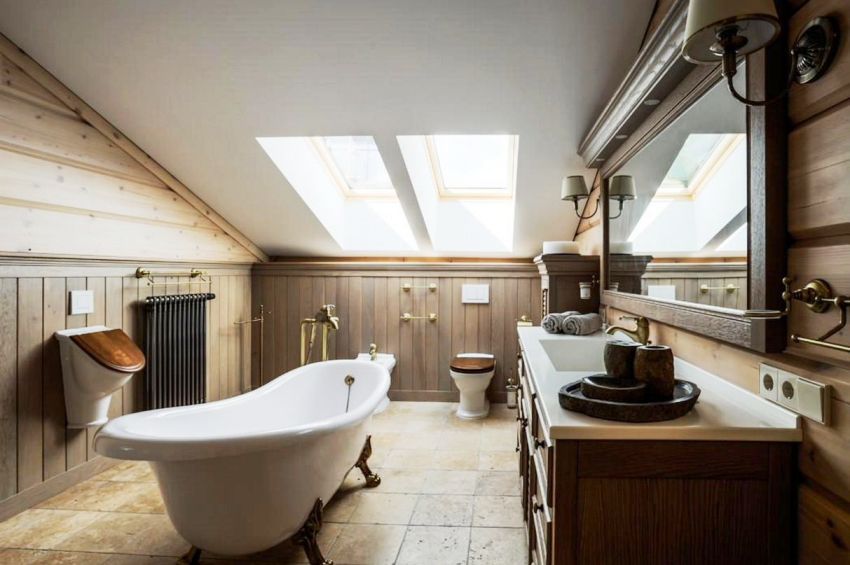
The guarantee of reliability and the origin of the panels must be supported by accompanying documentation
Plastic panels practically eliminated the listed difficulties arising during the decoration. They also significantly outperformed wallpaper and vinyl in terms of durability and aesthetics, ease of maintenance. Decorating the bathroom with wall panels does not lose its popularity today, it is constantly reinforced by the appearance of new types of them.
This material can be classified as a special type of finish. In addition to the decorative effect that it gives to the room, the walls are also protected from moisture. The peculiarities of the installation of the panels are that they make the cladding quite airtight while the moisture resistance of the material itself.Decorative processing in the design of the bathroom contributes to the implementation of various design ideas. The combination of high performance and aesthetic characteristics allows wall panels to be an excellent decorative finishing material.
The main types of wall panels for bathrooms
The main requirement for bathroom wall panels is moisture resistance. It is this quality characteristic that significantly narrows the range of facing coatings that can be used to decorate these premises. The main types of materials used in the manufacture of panels:
- PVC - polyvinyl chloride, or thermoplastic polymer. It is created from petroleum particles. Various additives-modifiers allow the material to be more or less resistant to mechanical stress, ultraviolet light, temperature extremes, etc.
- MDF (fine fraction) is a board made of wood dust without the use of chemical binders, with a durable moisture-resistant coating.
If you look at the photos of the panels in the bathroom, presented on the Internet, you will not be able to visually distinguish the types of material. Features appear during operation. PVC panels are not expensive. You can pick up a budget option with an interesting decorative design. These panels are characterized by:
- antistatic (do not attract dust);
- moisture resistance;
- heat resistance (do not react to temperature changes);
- ease of maintenance (do not require the use of special detergents).
All of the above characteristics are inherent in MDF wall panels. Additionally, it should be noted that the basis of this type of material is also a good heat and sound insulator.
Helpful advice! Walls in the bathroom that have an external position, that is, they are not internal structures, are best covered with MDF plates. They will help keep the bathroom warm.
In addition to the quality of the material used, the panels also differ in the form of manufacture and the method of installation. Distinguish between rack, slab and sheet types.
Rack panels for the bathroom: sizes and types
This type of material is a strip that is assembled in a type-setting way. These panels are also called plastic clapboard. Decorative processing does not require a certain fit of the pattern, so it is quite easy to assemble the elements.
Bathroom wall panels in the form of slats can have the following dimensions:
- The thickness ranges from 8 to 12 mm. This indicator significantly affects the strength. The thinner the panels, the more susceptible they are to mechanical stress.
- The width is 125-400 mm. The installation method and the overall decorative appearance largely depend on it. It also contributes to a certain extent to the visual perception of space (expands the room, increases the height, etc.).
- The length of the strips varies from 2400 mm to 5900 mm. Economical consumption, appearance and tightness of the coating depend on the correct choice of the length of the material. The absence of the need to join strips in height contributes to the aesthetics of the design and prevents the appearance of unnecessary additional joints that are difficult to seal tightly.
In the photo of bathrooms made of PVC panels, you can see both the vertical and horizontal arrangement of the slats. The ability to mount material in various ways gives additional freedom to design creativity and contributes to the emergence of interesting design ideas.
The use of modern tile panels in the bathroom
An interesting option for covering the walls in the bathroom are tiled panels. They can be either square or rectangular.This material does not have standard sizes, the sides of the plates can be either 250 or 900 mm. The thickness of the products is the same as for the rack and pinion - 8-12 mm.
This type of finish differs in a wide variety of decorative design. This is confirmed by photos of the panels in the bathroom, posted on the Internet on design and selling sites. They show options for products with an interesting texture of the outer layer, deep color shades, various patterns, including those imitating ceramic tiles, types of wild stone, other natural materials, as well as with floral and other interesting ornaments.
The process of covering walls with a tiled appearance of panels differs in some peculiarities. First of all, you need to pay attention to each unit of material: lay out, track the position, aesthetically arrange the joint.
It is the last moment that is most difficult. Tiled wall panels for interior decoration of the bathroom are often joined during installation (do not have connecting elements). With perfectly flat walls, the joints are aesthetic, but even minor irregularities significantly spoil the appearance.
Helpful advice! The unevenness of the joints can be closed with overhead strips. Their use should be taken into account even when drawing up a bathroom design project.
Sheet panels in the bathroom: fast finishing speed and minimum seams
Convenient and quite often the preferred type of finishing material for bathrooms are sheet panels. They can have a varied texture of the top layer and different colors, differ in matte and glossy surfaces. The designers have developed a large number of panels with imitation of different materials.
The standard sizes of the manufactured sheet panels are:
- 1035 × 500 × 4 mm;
- 2700 × 500 × 8 mm;
- 2700 × 250 × 8 mm;
- 3000 × 500 × 8 mm;
- 3000 × 250 × 8 mm.
Certain types of panels imitating mosaic can have dimensions of 955 × 480 × 4 mm. Such parameters contribute to a more convenient placement of sheets on the walls during installation.
Bathroom wall panels in the form of sheets are usually made without joining elements. Therefore, the joints must be additionally sealed with molding (if only a decorative effect is needed) or other overhead strips that contribute to a stronger bond.
Panel sheets can be easily cut with a carpenter's knife, which greatly simplifies installation work when decorating a bathroom. Large material sizes provide a high finishing speed.
Helpful advice! When using decorative or functional decorative strips, it is necessary to seal the joints of the sheets with a special silicone compound, which will create a seam tightness.
Methods and features of installing wall panels in the bathroom
In order for the design of the bathroom to be interesting, and the finishing work is carried out efficiently, it is necessary to think over the installation method correctly. It most of all depends on two indicators:
- from the shape of the material selected for finishing. For example, slats and large sheets are difficult to glue, and the result can be disappointing with inaccuracies when laying out;
- from the condition of the surface of the walls. The presence of irregularities will not allow you to decorate a room with high quality without arranging a frame.
Installation recommendations are not given for photos of bathroom panels that are advertisements of manufacturers and trading companies. And from the photo of the interior, the way of finishing is impossible to understand. Consequently, the choice is made independently (if the bathroom is equipped with their own hands) or by a specialist who has to carry out the installation.
The main methods of finishing the bathroom with panels:
- gluing material to the wall;
- fixing to the frame.
Both options have advantages and disadvantages. The latter may be a consequence of specific conditions or be an objective factual result. Each method requires a completely different set of tools and consumables.
Bonding plastic bathroom wall panels
Gluing panels is considered to be a fairly simple, quick and easy installation method. This is true only if the walls are flat. If there are bulges and level differences, efforts must be made to eliminate them. Cracks and depressions should be putty. The protruding parts can be removed with a spatula. If the walls are concrete, this method is ineffective. A special cutting power tool must be used.
If there are a large number of wall defects, it is better to completely plaster the surface or sew it up with drywall, and then stick the panels on it. This finish is shown in the photo. The wall panels are perfectly docked and the seams are practically invisible.
The following can be used as adhesives:
- special adhesive for PVC rails;
Related article:
Mosaic tiles for the bathroom: varieties, choice of design and installation
Varieties of mosaic tiles by material of manufacture. Basic options. Councils for the choice of design and color. Laying mosaic tiles with your own hands.
- glue "Moment-montage", "Moment-Kristall";
- Emficol 34012A;
- Clayberite 636;
- liquid Nails.
Helpful advice! When covering walls with panels using glue, you should not only perfectly level, but also dust the surface, remove traces of grease and dirt. Otherwise, the strength of the connection may be significantly reduced.
The disadvantages of this installation method are the following:
- In case of damage to the panel covering, it is practically impossible to remove and replace a separate fragment without losing the overall aesthetics.
- The element with the connecting device is difficult to dismantle. After replacing a part of the coating, traces of mechanical damage remain on the butt seams.
- In the course of renovation work, dismantling the glued panels is time-consuming and physically demanding.
It should be noted that the absence of a void between the wall and the panels makes the latter less susceptible to mechanical stress.
Frame method of mounting wall panels for the bathroom
The frame method of mounting wall panels involves the preliminary execution of the lathing of wood or metal. It should be noted that this type of fastening is more acceptable for rooms where there is no need to save every centimeter, since the structure is removed from the wall, as a result of which it steals a certain number of centimeters of the total area. In small rooms, this reduction in free space is noticeable - and not only visually.
To create a lathing structure, you can use 20x20 mm bars. They are much cheaper than metal elements. For metal battens, you need to purchase the UD profile for the outline and CD as guides.
Important! When performing the construction of a lathing made of wood, it is necessary to pre-treat the bars with an antiseptic.
The first thing to do before you start decorating the bathroom walls with PVC panels is to mark up the frame. The lower and upper lines (taking into account the plinth) are displayed using the building level.To expose vertical elements, it is worth using a plumb line. The removal of the frame from the wall must be determined by the most protruding point.
It is better to fix the lathing with self-tapping screws with a step size of 150-250 mm. The installation of profiles (or bars) is first done along the edge of the structure, and then in the inside. The location of the guiding elements inside the structure depends on how the panels are mounted - horizontal or vertical. Panels should be fixed perpendicular to the rails.
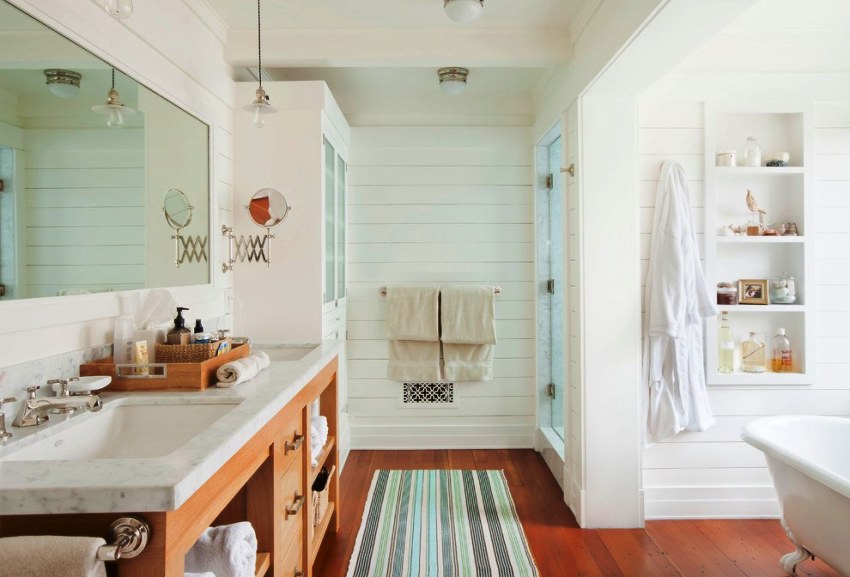
Installation of PVC panels on the frame may imply the placement of a heat-insulating layer between its elements
Material calculation when decorating a bathroom with panels
A very important step in the process of decorating a bathroom with panels is the calculation of the material. The procedure is rather complicated and largely depends on the shape and design of the coating to be applied.
Option one. The walls are vertically closed with slatted panels. This type usually does not have a pattern that requires special placement of elements. The calculation can be done as follows:
- take measurements to calculate the perimeter of the room;
- subtract the width of doors and window openings from the obtained digital value;
- the result is divided by the width of the rail.
With this installation method, it is important to choose the right length of moisture-resistant wall panels for the bathroom. It is worth purchasing an option in which the waste after the top trim will be minimal.
The horizontal arrangement of the rails requires a different calculation:
- calculate the area of each wall (or the area of the section of each wall sewn up with panels), add;
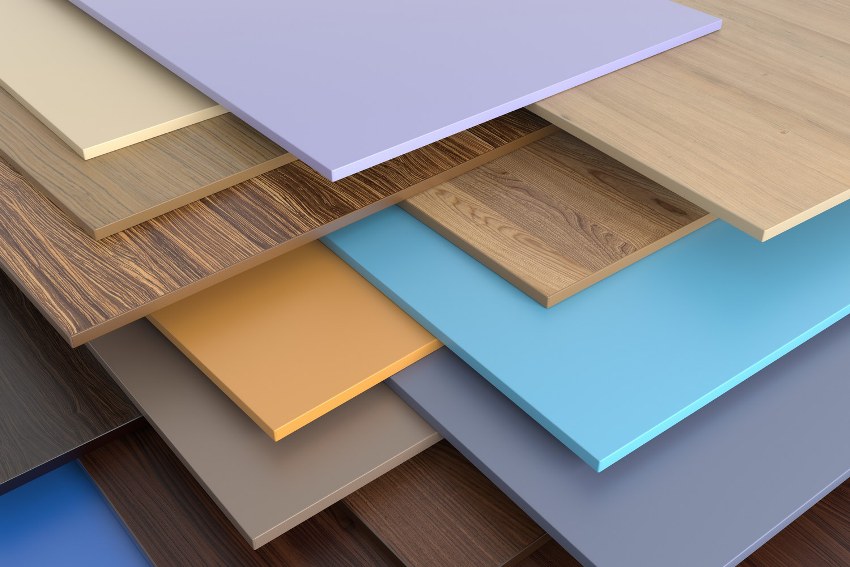
The calculation of the panels in the design of the bathroom can be performed by the method of measurements
- subtract the area of the windows and doorway;
- divide the result by the area of one lath.
Helpful advice! With an installation method that assumes joints only in the corners, it is worth calculating what the departure will be, and taking into account the area of the rail without the cut off part.
On the Internet, in the photo of the bathroom trim with PVC panels, you can see the thoughtfulness of "laying" the picture in the corner parts of the room. If the complete fragment does not fit, it is necessary either to continue it after the corner cut, or to make the incomplete parts of the panels identical in adjacent corners.
When using sheet and tile panels, the calculation is performed by dividing the area of the walls by the area of the facing material.
Installation features bathroom panels for tiles
Particularly popular are wall panels for tiles. Many people prefer this type precisely because visually the bathroom looks like it is lined with real ceramics. For fairly little money, the premises can be given a presentable look and provided with a reliable covering.
Panels for tiles are often produced in a square or rectangular shape (although there are rack options). If one of the sides is at least 700 mm in size, the material can be attached to the frame. With smaller parameters of panels, a crate with frequent internal guides is required, which is costly both financially and in time. Small panels are more convenient to glue on the wall.
For wall panels for bathroom tiles, the condition of the wall surface is also of great importance. Irregularities will not only spoil the appearance, but also will not allow high-quality bonding of both surfaces. Unsecured edges of the slabs can be damaged during use of the room.
The presence of an imitation of a seam allows you to cut the material along its line and join with other parts without losing aesthetics. This makes it possible to arrange elements in an interesting way in the course of wall decoration: use friezes, inserts, ornament, etc.
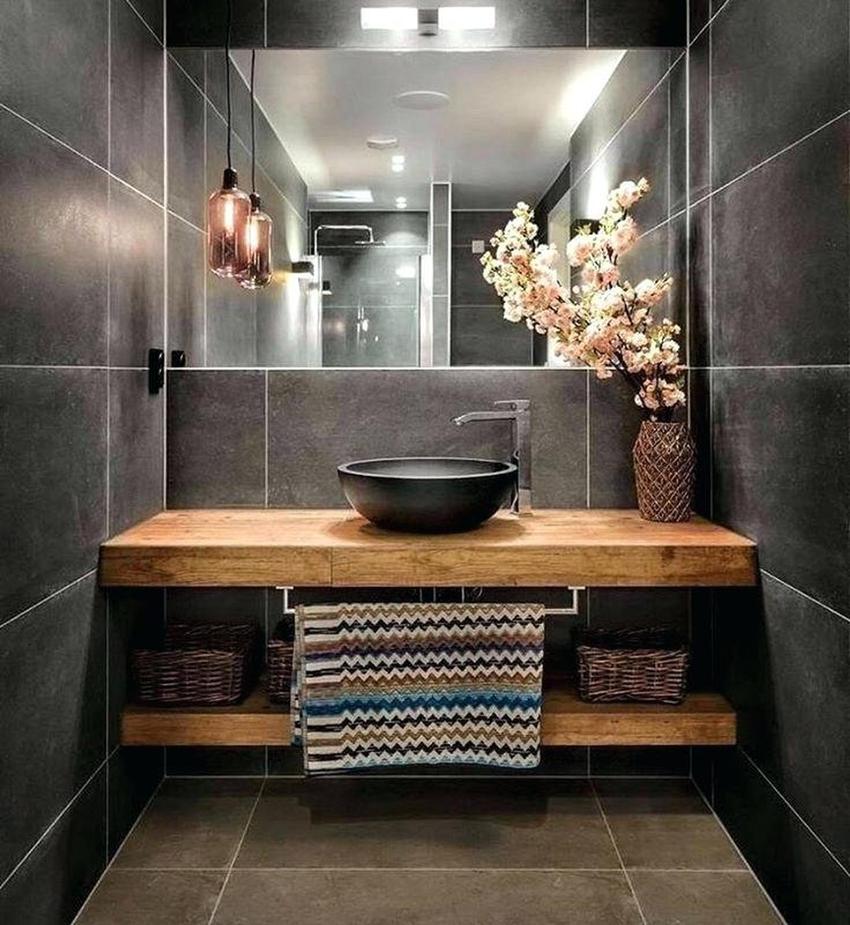
For installation of panels, it is not necessary to provide a perfectly flat base, as required by the tile
Characteristics and features of the installation of MDF panels for the bathroom
Particularly noteworthy are MDF panels. They have several positive differences from PVC finishing material:
- more environmentally friendly. The base does not contain harmful substances, the lamination is made of non-toxic materials;
- the degree of strength is much higher than that of plastic options;
- texture and color design are more varied.
Confirmation of the variety of types of design developments of MDF coating can be found in the photo of bathroom wall panels presented on the Internet. This is also an imitation of wood, conveyed by the likeness of not only color shades, but also the structure of wood. These are panels that imitate tiles, and even options with a 3D image.
MDF panels are often produced in large sizes, that is, they are sheet material. They are best used for rooms where vertical cutting is not required. This limited application is due to the fact that it is impossible to perform a cut, like an industrial one. Consequently, the joint will be noticeable, which will significantly affect the aesthetics of the finish.
This material can be mounted both with glue and by fixing it to a frame base. Resistance to mechanical stress and strength of the outer layer allow this type of panels to compete with tiles in durability.
Helpful advice! When fixing MDF panels with a frame method, it is imperative to apply an antiseptic agent to the wall.
Toilet wall panels: application features
When combining a bathroom with a toilet, the question of the design of the latter does not arise. If this is a separate room, design should also be considered. Many people tend to equate the method of covering the walls in the toilet and in the bathroom. This is far from always justified, since the toilet is often small. The use of a frieze, molding, overhead strips makes it visually even smaller, turning it into a box.
The use of moisture-resistant wall panels when decorating a toilet is quite appropriate. It is better to choose options for light shades, without a strict geometric pattern. The matte surface is more organic for this room. This is due to lighting: in a small space, glare cannot be avoided.
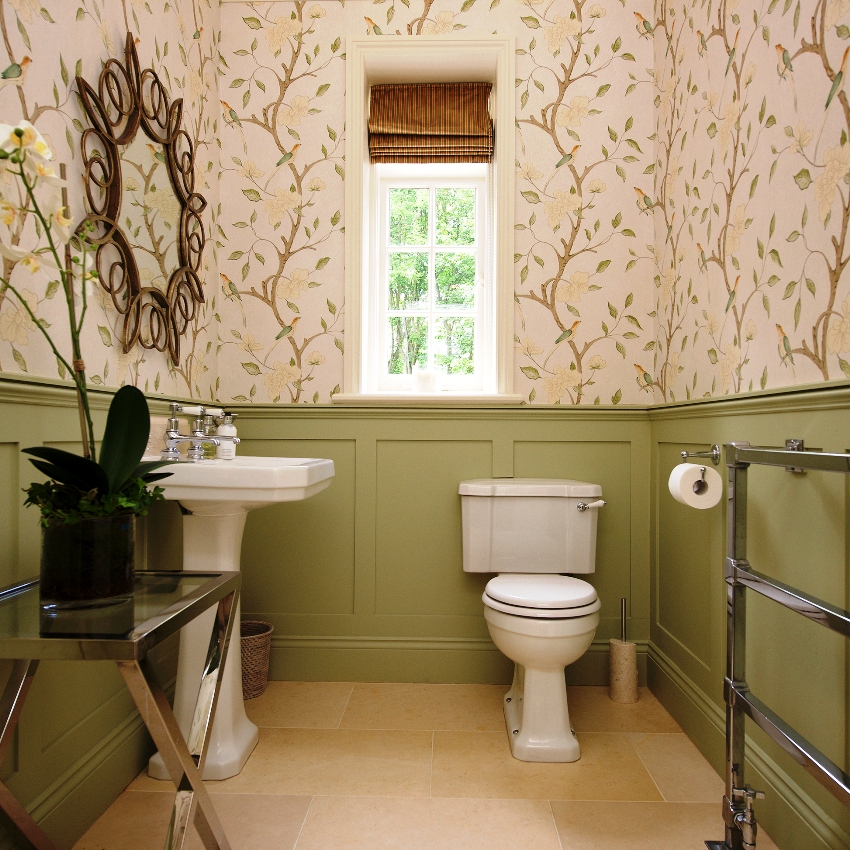
Plastic panels are considered one of the most practical and rational materials for toilet decoration.
Considering that with the frame installation method the room decreases, it is better to prepare the walls for gluing the panels. And the absence of emptiness will help preserve the integrity of the material.
The efficiency of using wall panels in the toilet is also increased due to the fact that it is convenient to make boxes of them that close communications.
Helpful advice! Do not use a dark or contrasting color with respect to the panels when sealing seams in the toilet. The presence of tracing lines visually narrows the space.
The use of wall panels in the interior: opinions "for" and "against"
On the Internet, you can often find negative opinions about the use of panels in bathrooms. There are two main arguments:
- externally, the room looks cheap and rustic;
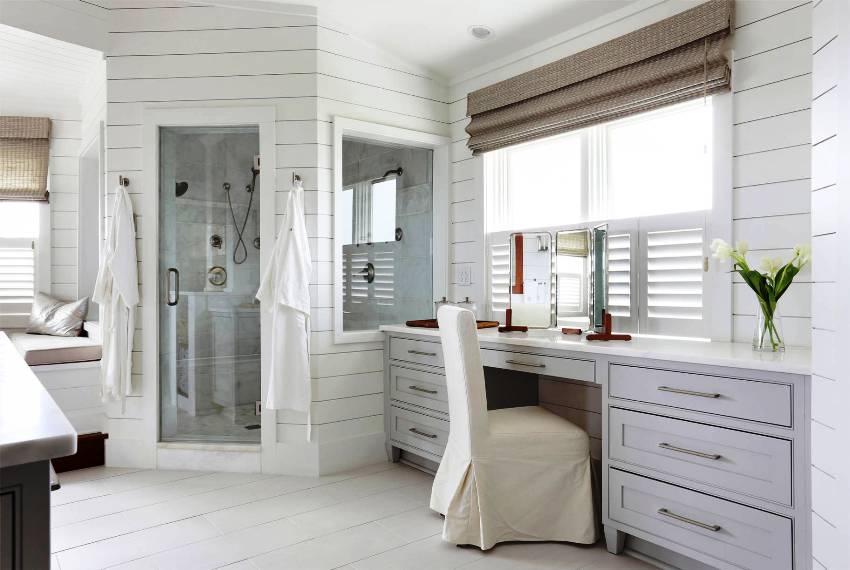
Wall panels - a successful combination of economy and practicality with the effect of novelty, aesthetics and interior style
- the material is not environmentally friendly.
Many are sure that after a while, this type of wall decoration will definitely want to be replaced with ceramic tiles. Most likely, this is the opinion of those who did not manage to create an interesting interior, but simply acquired the material and fixed it on the walls.
Bathroom wall panels are moisture resistant. This quality allows them to maintain their appearance for a long time. Therefore, in the absence of traces of mechanical damage and proper care, the panels will not lose their aesthetics.If at one time a serious attitude was shown to the development of design, the interior will delight for a long time.
The issue of environmental friendliness should also be approached wisely. A standard situation: when decorating the walls, an environmentally friendly material was chosen, that is, ceramic tiles, but it was laid with the help of a chemical mixture, an acrylic bath was installed, aggressive compounds are used as detergents ...
Neither PVC panels nor the laminated layer of MDF products are toxic materials (emitting harmful substances).
Interiors with MDF and PVC panels in the bathroom, photos of which are posted on Internet sites, demonstrate such interesting design ideas that there is absolutely no reason to think about an alternative - ceramic tiles.
Plastic panels for the bathroom: photo products, designs
The presence of photo panels greatly simplifies the choice of material. Products are classified according to certain criteria, using the filter, you can view the options of interest, or get acquainted with the full range and more closely study the characteristics of the species you like.
Having a certain desire, it will not be difficult to pick up panels: the choice is wide and varied. In any selling company, you can find both simple slatted products with a blurred pattern of restrained shades, as well as bright options with large decorative patterns, contrasting views with the same external texture, from which you can make an expressive composition.
If there is no exact idea of the interior, it is worth looking through the ready-made bathroom design options with PVC panels. There are enough photos of design ideas on the Internet pages - you will probably be able to find a suitable project. It is much easier for a layperson to select material for a finished composition than to come up with a design from an existing one. It is only necessary to correctly visualize (transfer to specific conditions) the interior proposed in the photo. Color, proportional, compositional changes can significantly affect the final result.
Bathroom wall panels: how to choose the right
Can you choose PVC wall panels for the bathroom from the catalog? This is the way to get acquainted with the products offered in almost any store. Despite the fact that it is not always possible to see the material you like at the stand beforehand (there is simply not enough space to accommodate the entire assortment), you should not buy blindly.
To purchase a quality product, you should consider the following characteristics:
- the thickness of the front part. The higher the number, the stronger the panel. Better if it is at least 2.5 mm;
- number of stiffeners. The rule is the same: the more there are, the more resistant the product to deformations and mechanical stress;
- absence of chips, dents and other defects on the entire surface of the panels, including elements for connection (if any);
- belonging of goods to one batch. Even with an identical article, the products may differ in shade, which will significantly manifest itself after the installation is completed.
Helpful advice! If the choice is made only on the basis of a photo, you should not purchase panels for the bathroom without receiving an answer from the consultant manager to questions regarding the above characteristics.
Moisture resistant bathroom panels: manufacturers and prices
When choosing any thing, I want to get an answer to the question of who is the manufacturer. The name of a well-known brand usually dispels doubts, and cost issues fade into the background. Wall panels are produced by hundreds of enterprises. Among them are both domestic and foreign manufacturers.
The most recognized today are the following:
- Belgian company Venta. The photo catalog of PVC wall panels for the bathroom of this manufacturer is constantly updated with new types. The latest development is panels with digital printing.
- Italian company Forte. Constantly studies consumer demand, responding to changes in trends. It also produces exclusive wall panels.
- Domestic company "Green Line" LLC. The production is located in the Vladimir region. Raw materials are purchased abroad, the products are distinguished by a high level of environmental friendliness and a variety of assortments.
- LLC "Planet Plastic", an enterprise near Moscow. Wall panels are the main product. Produces about 150 types of high quality finishing materials. Decorating method - thermal transfer and offset printing.
The products of all of the above companies are presented on the Internet. Photos of plastic panels in the bathroom are supplemented with a name that reflects the design feature of the design, information about the size and price.
The cost of domestically produced panels:
- 1035х500х4 mm - from 120 to 158 rubles / sheet;
- 2700x500x8 mm - from 121 to 350 rubles / sheet;
- 3000x500x8 mm - from 135 to 440 rubles / sheet.
Foreign-made wall panels are often sold in packs. The price of imported products is 15-25% higher than the cost of domestic counterparts.
Advantages and disadvantages of wall panels in the bathroom
Summing up the technical and aesthetic characteristics of this finishing material presented above, the methods of its installation and selection rules, it will be useful to highlight and summarize the main advantages and disadvantages of PVC and MDF wall panels. Among the advantages are the following:
- low price. Repair using wall panels will cost half as much as using ceramic tiles;
- the ability to hide even significant flaws in wall surfaces;
- simplicity and availability of installation, which can be done by hand. The material is easy to cut;
- resistance to moisture and ultraviolet radiation;
- strength (more related to MDF panels);
- providing additional sound and heat insulation;
- a variety of shapes, shades and textures. Photos of bathroom panels posted on the Internet demonstrate a lot of original design ideas;
- ease of care.
Among the shortcomings, one should single out a low level of environmental friendliness, susceptibility to mechanical stress (as applied to PVC panels), a reduction in the area of the room with a frame installation method.
The use of plastic wall panels allows you to quickly give the bathroom aesthetics and makes the use of the room comfortable. A variety of choices makes it possible to embody interesting design ideas. And for fans of periodically changing the interior, this material will allow you to do this easily and inexpensively.
